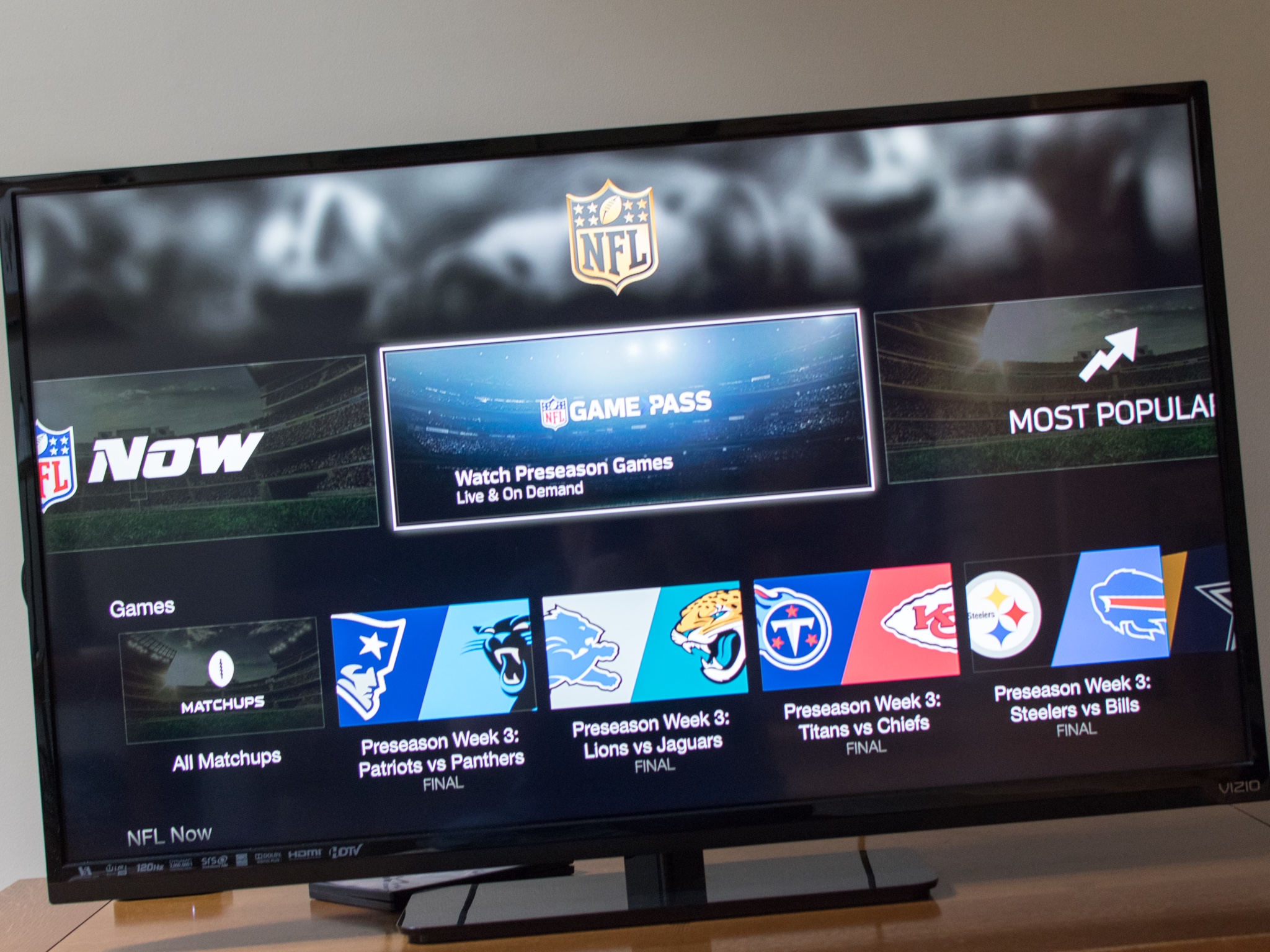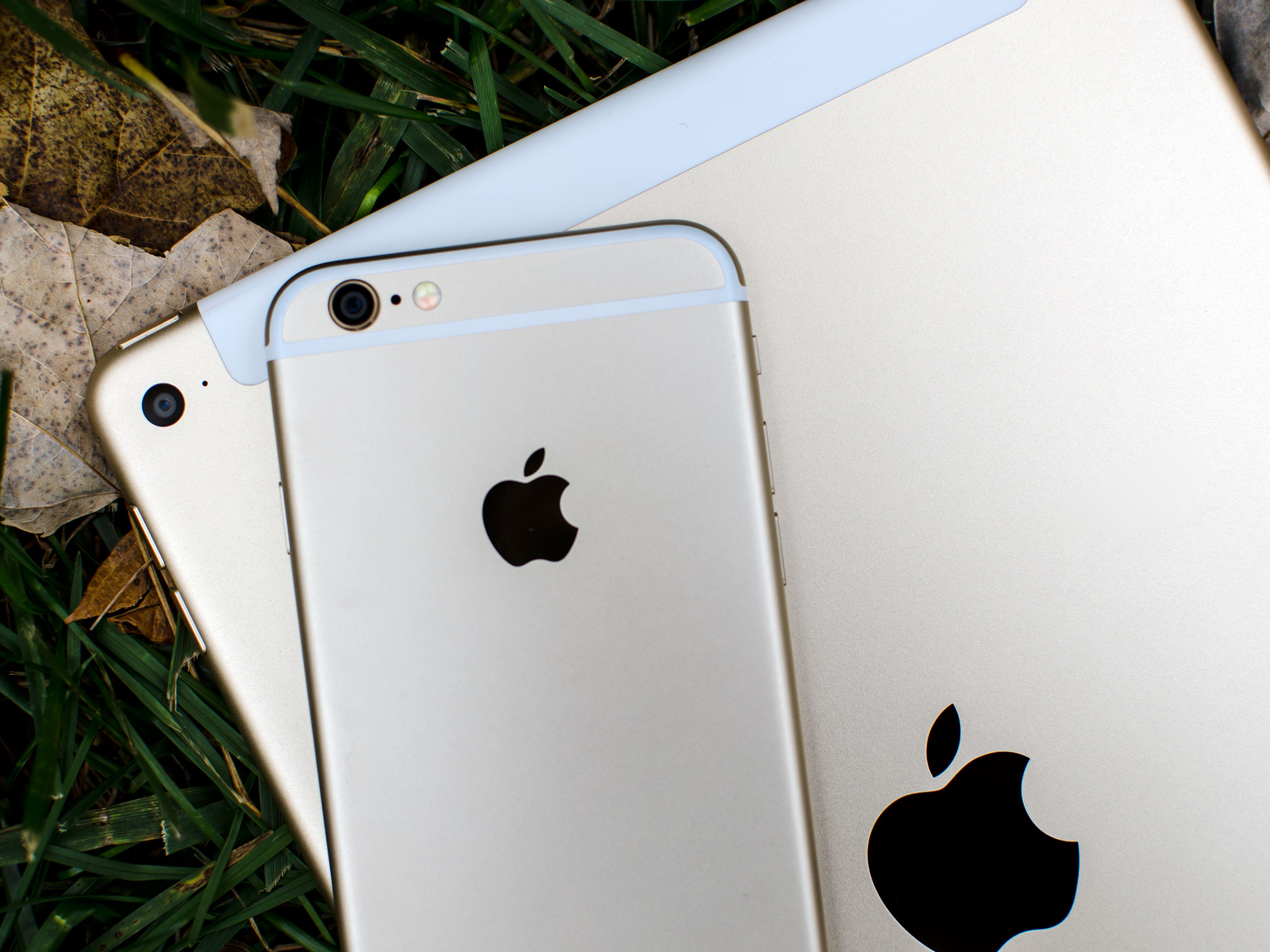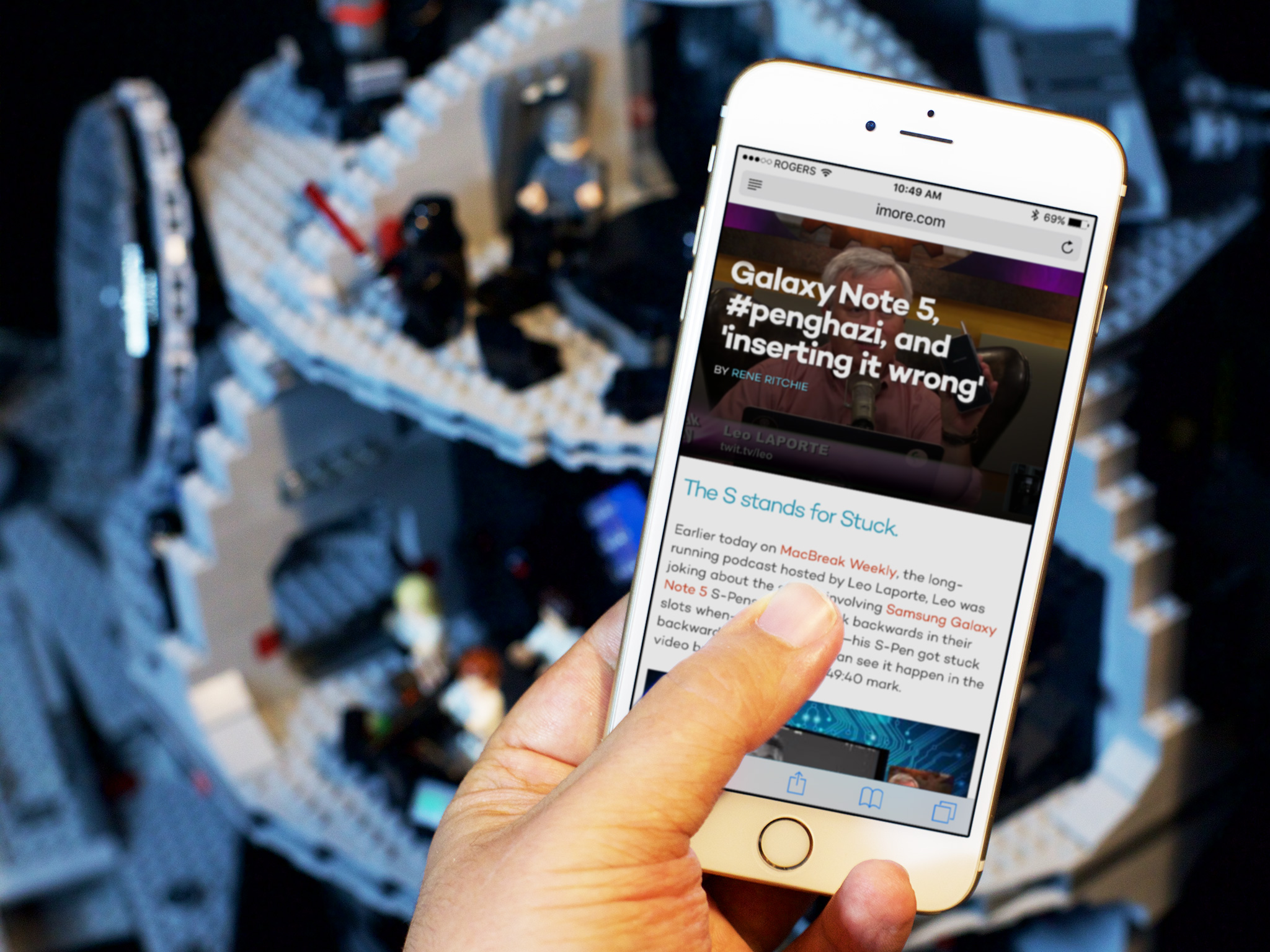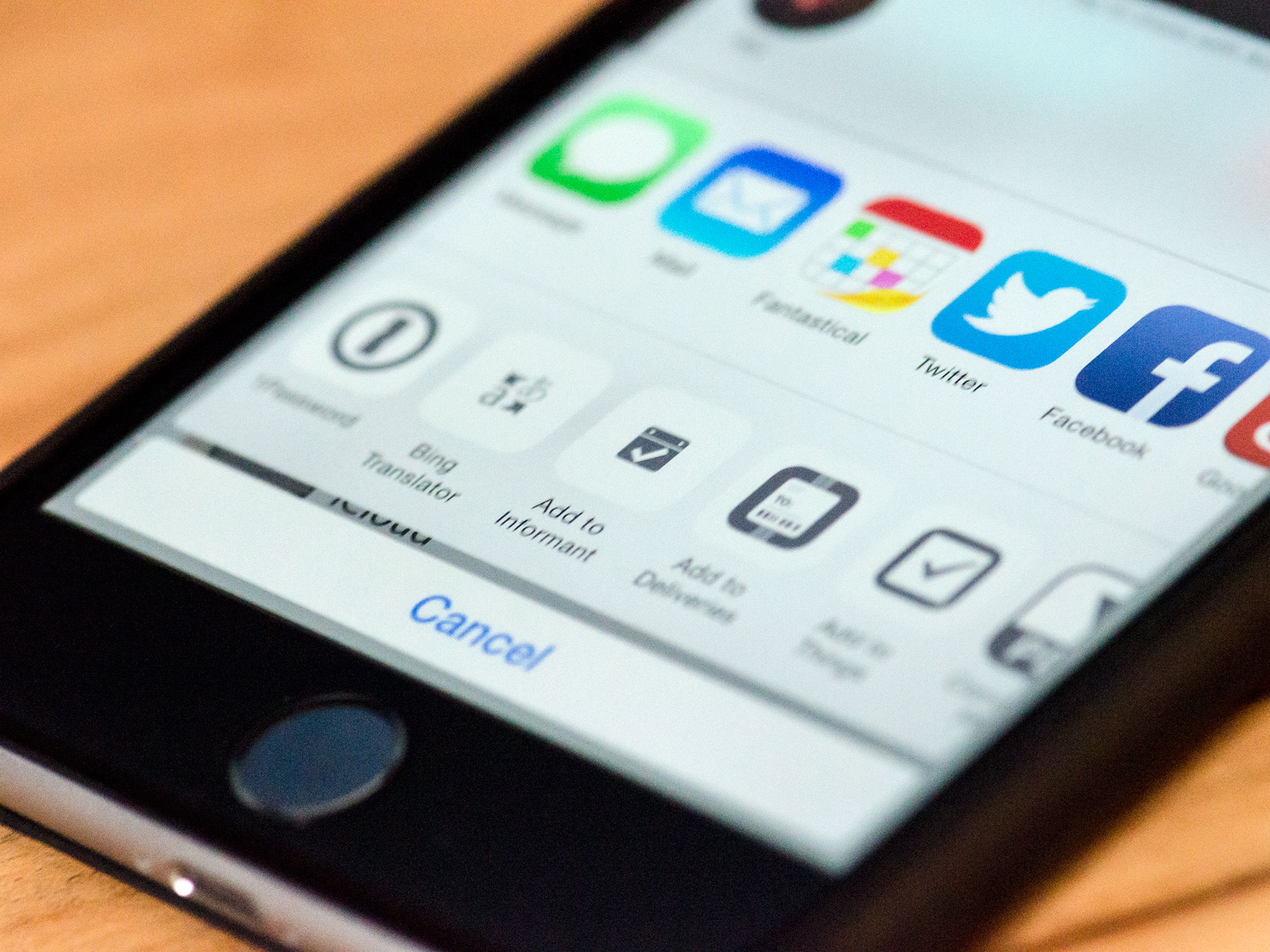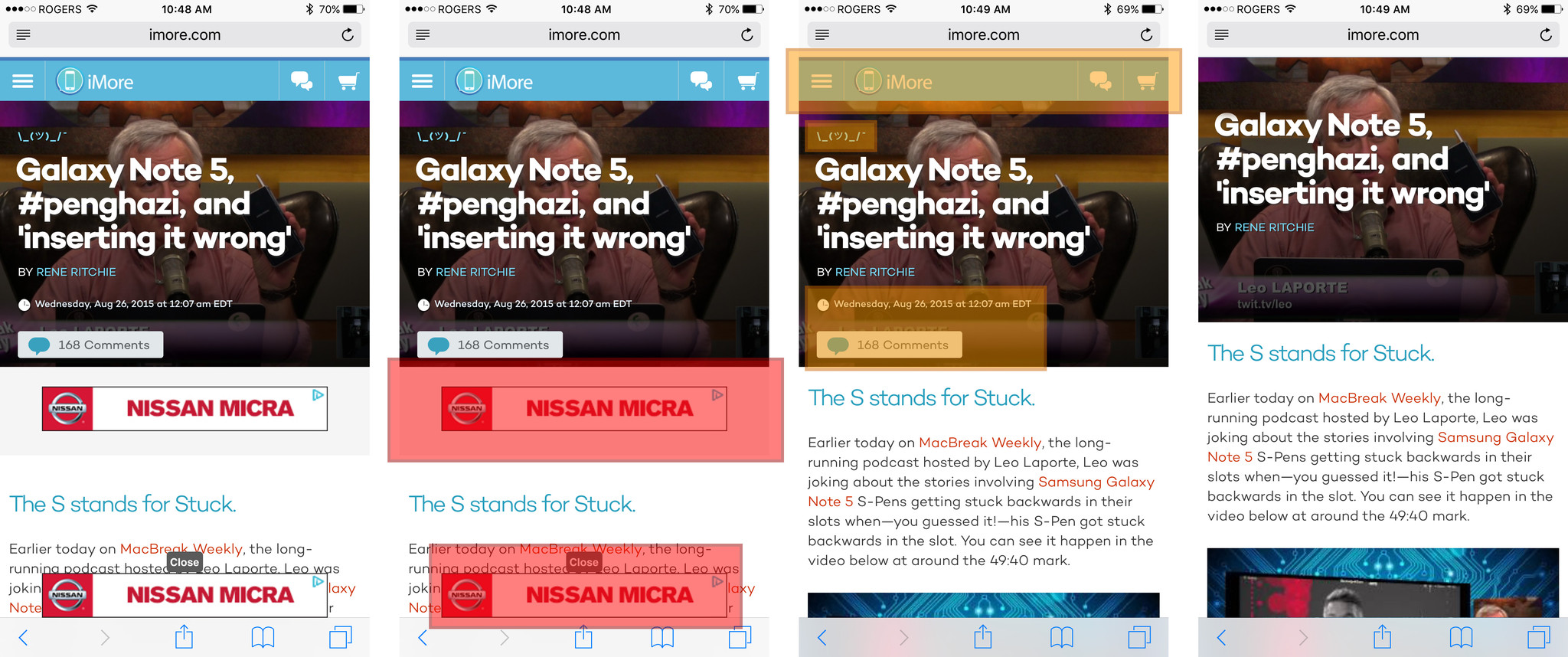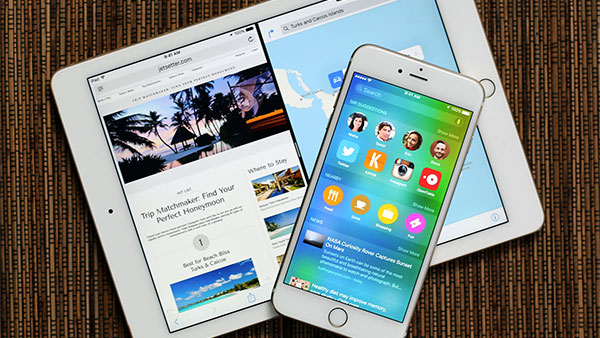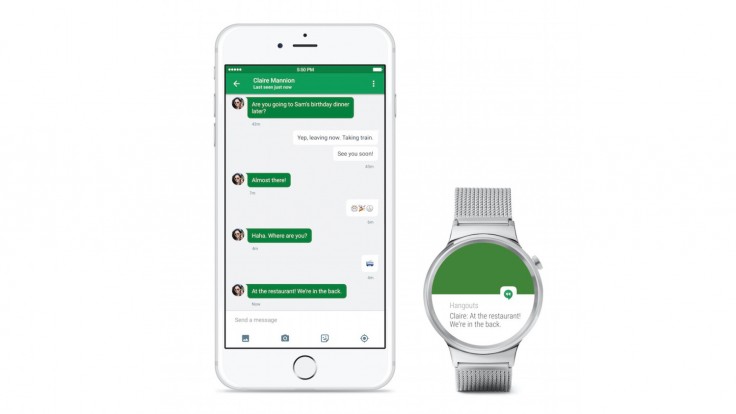NFL Game Pass brings on-demand football to Apple TV
- aug
- 31
- Posted by Michael
- Posted in Okategoriserade
A fresh football season is upon us, and the NFL app on Apple TV has updated in preparation with access to the new Game Pass feature, giving football fans access to a large variety of on-demand games. With NFL Game Pass on Apple TV, users will be able to catch out-of-market preseason games as they air, along with a back catalogue of on-demand games going all the way back to 2009. In addition, once the regular season starts, users will have access to those games on-demand as well.
As announced in late July, NFL Game Pass will replace a similar feature known as Game Rewind, and is available for a subscription cost of $99.99 per year — though highlights are available for free.
Star Wars: Galaxy of Heroes gets its first trailer ahead of its holiday release
- aug
- 31
- Posted by Michael
- Posted in Okategoriserade
Electronic Arts has now released the first gameplay trailer for their upcoming mobile collectible card RPG game Star Wars: Galaxy of Heroes. The game, which was first announced in June at E3 2015, will be released sometime this holiday season. The t…
read moreApple Pay comes to the University of Oklahoma campus
- aug
- 31
- Posted by Michael
- Posted in Okategoriserade
We’ve already seen Apple Pay land in numerous retailers since its debut, and now it’s starting to trickle out to college campuses. The University of Oklahoma has just announced that it will start accepting Apple’s mobile payments platform campus-wide starting this week. From the University of Oklahoma:
Starting this week, Sooners are now able to pay for items at any one of OU’s 400 point-of-service locations — everywhere from Couch Restaurants to the One University Store and the OU Bookstore. That’s right: Buying textbooks, technology and food on campus has never been easier — or more techy.
Previously in Apple’s Q3 2015 earnings call, CEO Tim Cook announced that Apple Pay will begin arriving at 700 universities and colleges starting this school year. Some of the colleges include Auburn University, the University of California Irvine, and Colorado State University. For its part, the University of Oklahoma says it is the first university to roll out support for Apple Pay campus wide.
Source: University of Oklahoma; Via: MacRumors
You can now browse Google+ by topic on iPhone with Collections
- aug
- 31
- Posted by Michael
- Posted in Okategoriserade
If you’re an avid Google+ user on your iPhone, you’ll be happy to know that the app has been further brought up to parity with its Android counterpart with Collections. The feature allows you to easily group posts by topic, much like a similar feature…
read moreApple and Cisco announce new enterprise-focused partnership
- aug
- 31
- Posted by Michael
- Posted in Okategoriserade
Apple and Cisco have announced a new partnership focused on enterprise users. The partnership will see Apple’s devices work even better with Cisco’s networks and services, including voice and video communications products.
Cisco will work to optimize its networks and services specifically for iOS devices, and together with Apple, will work to make iOS devices better tools for collaboration in enterprise environments. The goal, ultimately, is to give users ”a seamless experience between iPhone and their desk phone.”
More specifically, the two companies will focus first on the following, according to Cisco:
- Delivering unparalleled performance and end-to-end solutions on Cisco networks and iOS devices
- Extending the Cisco Unified Communications experience to the iPhone
- Transforming team collaboration with iOS experiences on Cisco Spark, Cisco TelePresence, and Cisco WebEx
This isn’t Apple’s first major enterprise partnership. Last year, the company announced a major initiative with IBM to produce a new class of mobile enterprise software across several types of businesses. Early in August, IBM also announced a new suite of tools for deploying Macs inside large businesses.
You can get the full details on the partnership in the press release below.
Apple and Cisco Partner to Deliver Fast Lane for iOS Enterprise Users
CUPERTINO, California and SAN JOSE, California — August 31, 2015 — Apple® and Cisco today announced a partnership to create a fast lane for iOS business users by optimizing Cisco networks for iOS devices and apps, integrating iPhone® with Cisco enterprise environments and providing unique collaboration on iPhone and iPad®.
”iOS is the world’s best mobile platform, and nearly every Fortune 500 and Global 500 company today has put iOS at the center of their mobile strategy,” said Tim Cook, Apple’s CEO. ”iPhone and iPad have become essential tools for the modern workforce and are changing the way work gets done. Together with Cisco, we believe we can give businesses the tools to maximize the potential of iOS and help employees become even more productive using the devices they already love.”
”Ninety-five percent of companies in the Fortune 500 count on Cisco Collaboration and Cisco networks to help their teams be more productive,” said Cisco Executive Chairman John Chambers. ”Through this engineering and go-to-market partnership, we’re offering our joint customers the ability to seamlessly extend that awesome Cisco environment to their favorite iOS devices. Together, we’re going to help teams achieve higher levels of productivity and effectiveness.”
To address the ever-increasing demands on corporate infrastructure, Cisco networks and iOS devices will be optimized so that they work together more efficiently and reliably with the goal of providing users with even greater performance.
Apple and Cisco are also working together to make iPhone an even better business collaboration tool in Cisco voice and video environments, with the goal of providing employees with a seamless experience between iPhone and their desk phone.
With Apple’s support, Cisco will deliver experiences specially optimized for iOS across mobile, cloud, and premises-based collaboration tools such as Cisco Spark, Cisco Telepresence and Cisco WebEx in order to deliver seamless team collaboration and reinvent the meeting experience.
Cisco is the worldwide leader in helping companies seize the opportunities of tomorrow by delivering the amazing results that come from connecting the previously unconnected. Cisco is empowering countries, cities, industries and businesses around the globe to move faster in order to keep pace with digital transformation and the move to the Internet of Everything (IoE). With approximately 70,000 partners, Cisco is very well positioned to provide our customers with next generation of networking, security, data center, and collaboration products and solutions that help them achieve their desired business outcomes. For ongoing news, please go to http://thenetwork.cisco.com.
Apple revolutionized personal technology with the introduction of the Macintosh in 1984. Today, Apple leads the world in innovation with iPhone, iPad, the Mac and Apple Watch. Apple’s three software platforms — iOS, OS X and watchOS — provide seamless experiences across all Apple devices and empower people with breakthrough services including the App Store, Apple Music, Apple Pay and iCloud. Apple’s 100,000 employees are dedicated to making the best products on earth, and to leaving the world better than we found it.
Gaming, Siri said to take center stage on new Apple TV
- aug
- 31
- Posted by Michael
- Posted in Okategoriserade
With the rumored additions of an App Store and motion control, it’s not surprising that gaming is said to be one of the major areas of focus for the upcoming Apple TV. While a number of games for iPhone and iPad offer support for play on current-genera…
read moreiOS 9 content blocking extensions: Explained
- aug
- 31
- Posted by Michael
- Posted in Okategoriserade
Content blockers aren’t ad blockers. But that’s what most people will use them for.
Safari content blocking extensions don’t automagically identify ads and prevent them from loading. Instead, they identify elements and resources on a web page and can, optionally, hide those elements and prevent those resources from loading. The goal is to show how fast the modern web—read: Safari—really is when you remove all the extraneous code that’s been dumped on top of it. And they’re coming as part of iOS 9.
The vast majority of the time the elements and resources blocked will be those used to serve ads. Other times they’ll be things like social networking buttons, performance and audience analytics, article comments, navigation headers, ”hamburger and basement” sidebars, and more.
Note: iOS 9 is currently in beta and governed by a non-disclosure agreement (NDA) that doesn’t allow for screenshots or video. All the material contained in our iOS 9: Explained series is from previous, now public versions of iOS, from iOS 9 features shown off during the WWDC 2015 keynote, and from our coverage of the event, including our iOS 9 first look.
Content blocker compatibility
Content blocking extensions require Safari or an app using the new Safari View Controller in iOS 9 to work. They also require 64-bit processors to handle the work. That means content blocking extensions are compatible with iOS devices released in 2013 or later—the ones that include a 64-bit Apple A7 processor or later. In addition to any iPhones and iPads Apple announces this fall, that list currently includes:
- iPhone 6
- iPhone 6 Plus
- iPhone 5s
- iPad Air
- iPad mini 2
- iPod touch 6
That means content blockers won’t work with iPhone 5c, iPhone 5, iPhone 4s, iPad 2, iPad 3, iPad mini, iPod touch 5, or with apps that use the old UIWebView or WKWebView controllers.
Content blocking basics
Blocking content, especially ads, has been possible on desktop browsers for a while, including OS X and Safari . With content blocking extensions, however, Apple is improving them for OS X and, for the first time, making them available on the iPhone and iPad. Apple is also fundamentally changing the way content blockers work.
In the past, content blockers were services that Safari consulted at load time. That meant the act of blocking content itself could reduce performance, and information about the page being visited could be shared with the service doing the blocking. In some cases, that meant the blockers themselves could theoretically be worse than the content or even malicious.
Apple doesn’t want to replace heavy CSS and JavaScript with just-as-heavy plug-ins, and they don’t want to replace ad trackers with blocker trackers. They want something that’s genuinely fast, light, and performance-focused. And they want something that’s private and secure.
That’s also the biggest difference between content blockers and content cleaners, like Safari Reader. With Reader, which debuted in iOS 5, the content is loaded first, including ads, scripts, and everything else, and then its re-rendered for maximum legibility. So, ads still get displayed, no matter how briefly, and hits still get tracked.
With blockers, the content is never loaded.
A brief history of Extensibility
Extensibility, introduced in iOS 8, is one of the most important advances in the recent history of mobile computing. They unbundle apps so features are no longer trapped in a single binary but can present remote interface and functionality in the system, in other apps, and even on other devices.
With Extensibility, apps can project widgets into Notification Center’s today view; provide custom upload and update functionality, and custom actions in Share Sheets; hook filters into the Photos app; provide custom keyboards system-wide; access your files anywhere via iCloud Drive or third-party document providers like Dropbox or Google Drive; fill in passwords or translate text right inside the Safari browser; and process data on your iPhone and display it on your Apple Watch.
And they can do all this while maintaining the high level of security built into iOS. That’s because the app that’s receiving the interface has no visibility into the data that interface is showing. It’s just the host, not the container.
How content blocking extensions work
With content blocking extensions in iOS 9 (and now OS X as well), what’s being blocked needs to be declared ahead of time. That way nothing gets consulted at load time and nothing about the page itself gets shared with anyone.
Content blockers, like other extensions, are hosted inside an app that gets downloaded from the App Store. Also, like any other extension, content blockers aren’t enabled by default. You have to go to Settings > Safari > Content Blockers and switch them on.
Unlike other extensions, once enabled you don’t have to tap a Share button to invoke content blockers or cycle through a set of options to use them. Content blockers are on all the time and applied automatically.
Here’s a simulation of what iMore would look like with ads blocked (red) and with navigation and non-essential text fields (orange) hidden.
Developers can add action extensions as well, to make it easier to add or remove specific sites or content types, for example, but otherwise content blockers really are ”set it and forget it”.
Content blockers for developers
To create a content blocker, developers add a Content Blocker Extension template in Xcode and create a list of rules in a JSON file. The rules define what gets blocked. The rules contain triggers and actions. Triggers determine when the rules get run and actions determine what happens when they do.
For page elements like divisions (div), the trigger can be as simple as coming across a CSS class and the action, setting its display property to ”none”. For example, if ”#about-the-author” is encountered it can be made to go away or if ”.hulk-all-caps” is found it can be forced into lowercase.
Developers can choose to target all domains, or to include or exclude specific domains. They can also choose to target all resources or to include or exclude specific resources.
For scripts, it can be as simple as blocking them from loading. Again, developers can choose all scripts or to include or exclude specific scripts, and to exclude first party (same scheme, domain, and port as the page itself) or third party scripts.
Filtering is handled by regular expression (regex). Developers can even create rules that, if the proper conditions are met, negate other rules. So, to prevent anything about ”special editions” from showing or loading, you could hide or block ”special” except when it’s part of ”despecialized”.
Or, developers could make a content blocking extension for travelers or data roamers that weighs every element, lets ”light” content through, but blocks anything ”heavy” to help save on bandwidth.
Once the content blocking extension is downloaded and enabled, Safari will compile the extension’s rules into bytecode and apply them whenever it loads a website. If an app uses the new Safari View Controller, then the same will happen in the in-app browser as well.
That makes the extensions incredibly efficient and, because the extension has no idea what page is being loaded, incredibly private.
Since developers can provide ways to change rules in the app that contains the extension, in action extensions, and in Settings, developers can notify Safari about updates and have the rules recompiled. That includes when white lists or black lists are imported or re-imported, sites are added or removed, different elements or resources are enabled or disabled, etc.
The ethics of content blocking
There’s no denying content blockers are well thought out and well executed. And when they’re running, Safari flies. If Apple succeeds at nothing else, they’ll succeed in making it wickedly obvious who’s really to blame for poor mobile performance.
The speed difference, especially on large media sites, is ludicrous. It’s like unhitching a trailer filled with lead and watching a truck, no longer burdened, take off like a rocket.
Unfortunately, there’s also no denying that it’s ethically questionable, at least in the case of ads.
Free web sites aren’t free. Even if there’s no pay wall, there’s still a value exchange: You ”pay” with attention and data, just like you do Google Search and Gmail. Blocking the elements and resources that collect the attention and data is effectively withholding payment. Some might call that a protest. Others, stealing.
Whether or not it’s analogous to commercial skipping on a DVR, torrenting TV shows, or cracking and pirating apps, or whether it’s closer to pop-up blocking, do not track, or even the push-back against Adobe Flash, is beyond the scope of this explainer.
When you add malvertising to the mix, who broke what social contract first might well be a moot point anyway.
Indisputably, an ethical form of content blocking would prevent an entire site from loading. If someone determines that a site is abusing advertising, tracking, malware, or anything else, they can add it to the list and, if they ever click a link or type in a URL that tries to take them back to that site, the browser or web view prevents it and reminds them they’ve blocked it. Site blocking would also protect artistic integrity in cases where, for example, a creator considers a web font integral to their design.
Beyond that, what’s acceptable is something everyone will have to decide for themselves.
A brave new web
Optimists will hope that providers like Google Ad Exchange will clean up their act or sites like iMore will be able to make a go of ethical native advertising and sponsorship models. Pessimists, that advertorials and supercookies from providers like Verizon will expand to fill the void and sites like iMore will give way to sites like Buzzfeed.
There’s also entire realms of non-advertising based content blocking developers could explore. That includes security-related extensions for preventing malware scripts embedded in iframes from known bad actors, and privacy-related extensions that prevent any kind of online tracking regardless of intended purpose. Like with any new technology, we won’t really know what developers can do until they show us.
I’ll save my personal opinions on content blockers for my iOS 9 review, coming this fall when Apple ships, so for now I’ll leave it at this—mobile ads served both publishers and readers poorly long before content blockers. Little could change or everything could change. The future is tough to predict even when, later, it’s obvious in hindsight.
Android Wear nu till iPhone
- aug
- 31
- Posted by Michael
- Posted in Android Wear, Apple Watch, google, Nyheter
Android Wear funkar nu med Iphone
- aug
- 31
- Posted by Michael
- Posted in iOS, iphone, iPhone 6, iPhone 6s, MacWorld, Mobiltelefon, Teknik, Ut på Twitter
Apple seeds eighth OS X El Capitan beta to developers, sixth beta hits for Public testers
- aug
- 31
- Posted by Michael
- Posted in Okategoriserade
A new beta of OS X El Capitan has been seeded to developers by Apple. This marks the eight beta, which is now available from the Mac Developer Resource Center, as well as from the Update tab of the Mac App Store for developers who are already using a …
read moreSenaste inläggen
- Bästa usb-c-dockan till din Macbook, Mac – 4 hubbar testade
- Apple joins OpenAI, Meta, Amazon, and more in signing voluntary AI safety guidelines
- Buying an iPhone in India? Here’s why you’ll be able to get it for less
- Milk The Cow and 4 other random apps I downloaded as a teenager
- With its seismic change to Fortnite’s iPhone return, Epic Games is putting its money where its mouth is
Senaste kommentarer
Arkiv
- juli 2024
- juni 2024
- maj 2024
- april 2024
- mars 2024
- februari 2024
- januari 2024
- december 2023
- november 2023
- oktober 2023
- september 2023
- augusti 2023
- juli 2023
- juni 2023
- maj 2023
- april 2023
- mars 2023
- februari 2023
- januari 2023
- december 2022
- november 2022
- oktober 2022
- september 2022
- augusti 2022
- juli 2022
- juni 2022
- maj 2022
- april 2022
- mars 2022
- februari 2022
- april 2021
- mars 2021
- januari 2021
- december 2020
- november 2020
- oktober 2020
- september 2020
- augusti 2020
- juli 2020
- juni 2020
- maj 2020
- april 2020
- mars 2020
- februari 2020
- januari 2020
- december 2019
- november 2019
- oktober 2019
- september 2019
- augusti 2019
- juli 2019
- juni 2019
- maj 2019
- april 2019
- mars 2019
- februari 2019
- januari 2019
- december 2018
- november 2018
- oktober 2018
- september 2018
- augusti 2018
- juli 2018
- juni 2018
- maj 2018
- april 2018
- mars 2018
- februari 2018
- januari 2018
- december 2017
- november 2017
- oktober 2017
- september 2017
- augusti 2017
- juli 2017
- juni 2017
- maj 2017
- april 2017
- mars 2017
- februari 2017
- januari 2017
- december 2016
- november 2016
- oktober 2016
- september 2016
- augusti 2016
- juli 2016
- juni 2016
- maj 2016
- april 2016
- mars 2016
- februari 2016
- januari 2016
- december 2015
- november 2015
- oktober 2015
- september 2015
- augusti 2015
- juli 2015
- juni 2015
- maj 2015
- april 2015
- mars 2015
- februari 2015
- januari 2015
- december 2014
- november 2014
- oktober 2014
- september 2014
- augusti 2014
- juli 2014
- juni 2014
- maj 2014
- april 2014
- mars 2014
- februari 2014
- januari 2014
Kategorier
- –> Publicera på PFA löp
- (PRODUCT) RED
- 2015
- 25PP
- 2nd gen
- 32gb
- 3D Touch
- 3D-kamera
- 4k
- 64gb
- 9to5mac
- A10
- A9X
- Aaron Sorkin
- Accessories
- adapter
- AirPlay
- AirPods
- Aktiv
- Aktivitetsarmband
- Aktuellt
- Alfred
- AMOLED
- Android Wear
- Angela Ahrendts
- Ångerätt
- Animal Crossing
- Animal Crossing New Horizons
- announcements
- Ansiktsigenkänning
- app
- App Store
- Appar
- Apple
- Apple Beta Software Program
- Apple Book
- Apple CarPlay
- Apple Event
- Apple iMac
- Apple Inc
- Apple Inc, Mobile Apps
- Apple Mac Mini
- Apple Macbook
- Apple MacBook Air
- Apple MacBook Pro
- Apple Macos
- Apple Maps
- Apple Music
- Apple Music Festival
- Apple Music Radio
- Apple Offer
- Apple Online Store
- Apple Park
- Apple Pay
- Apple Pencil
- Apple Podcast
- Apple Store
- Apple Store 3.3
- Apple TV
- apple tv 4
- Apple TV 4K
- Apple Watch
- Apple Watch 2
- Apple Watch 8
- Apple Watch 9
- Apple Watch Apps
- Apple Watch SE
- Apple Watch Series 2
- Apple Watch Sport
- Apple Watch Ultra
- AppleCare
- AppleTV
- Application
- Applications
- Apps
- AppStore
- Apptillägg
- Apptips
- AppTV
- April
- Arbetsminne
- armband
- Art Apps
- Återköp
- återvinning
- Åtgärdsalternativ
- atvflash
- Audio Apps
- Augmented REality
- Back-to-school
- Bakgrundsbilder
- BankId
- Barn
- Batteri
- batteriskal
- batteritid
- Beats
- Beats 1
- Beats Solo 2 Wireless
- Beats Solo2
- Bebis
- Beginner Tips
- Belkin
- Bendgate
- beta
- Beta 3
- betaversion
- betaversioner
- bilddagboken.se
- bilder
- bilhållare
- billboard
- Bioteknik
- Blendtec
- Bloomberg
- Bloons TD 5
- Bluelounge
- Bluetooth
- Böj
- Booking.com
- Borderlinx
- bose
- bugg
- Buggar
- Buggfixar
- Butik
- C More
- Calc 2M
- Camera
- Camera Apps
- Campus 2
- Canal Digital
- Carpool Karaoke
- Caseual
- Catalyst
- CES 2015
- Chassit
- Chip
- Chrome Remote Desktop
- Chromecast
- citrix
- clic 360
- CNBC
- Computer Accessories, Laptop Accessories
- Connect
- Cydia
- Dagens app
- Dagens tips
- Damm
- Danny Boyle
- Data
- datamängd
- Datorer
- Datortillbehör
- Datum
- Defense
- Dekaler
- Designed by Apple in California
- Developer
- Development
- Digital Inn
- Digital Touch
- Digitalbox
- DigiTimes
- Direkt
- Discover
- display
- DisplayMate
- Dive
- Docka
- Dräger 3000
- Dropbox
- Droples
- DxOMark
- E-post
- earpod
- EarPods
- Earth Day
- Eddie Cue
- eddy cue
- Educational Apps
- Ekonomi
- Ekonomi/Bransch
- El Capitan
- Elements
- ElevationLab
- Elgato Eve
- Elgato Eve Energy
- EM 2016
- Emoji
- emojis
- emoticons
- Enligt
- Entertainment Apps
- EU
- event
- Eventrykten
- EverythingApplePro
- Faceshift
- facetime
- Fäste
- Featured
- Features
- Feng
- Film / Tv-serier
- Filmer
- Filstorlek
- Finance Apps
- Finder For AirPods
- Finland
- FireCore
- Fitbit
- Fitness Accessories
- Fjärrstyr
- Flurry
- Födelsedag
- fodral
- Förboka
- Force Touch
- förhandsboka
- Första intryck
- Forumtipset
- foto
- FoU (Forskning och Utveckling)
- Fource Touch
- Foxconn
- FPS Games
- Framtid
- Fre Power
- Frontpage
- Fullt
- Fuse Chicken
- Fyra
- Gadgets
- Gagatsvart
- Gamereactor
- Games
- Gaming
- Gaming Chairs
- Gästkrönika
- General
- Gigaset
- Gitarr
- Glas
- GM
- Google Maps
- Google Now
- gratis
- grattis
- Guide
- Guider
- Guider & listor
- Guld
- hack
- Halebop
- hållare
- Hälsa
- Hårdvara
- HBO
- HBO Nordic
- Health
- Health and Fitness
- Health and Fitness Apps
- Hej Siri
- Helvetica Neue
- Hemelektronik
- Hemknapp
- Hemlarm
- Hermes
- Hitta min iphone
- Hjärta
- högtalare
- HomeKit
- HomePod
- Homepod Mini
- hörlurar
- htc
- Hue
- Humor
- i
- I Am A Witness
- IBM
- iBolt
- iBomber
- iBook
- icar
- iCloud
- iCloud Drive
- iCloud Voicemail
- iCloud.com
- iDevices
- IDG Play
- idownloadblog
- iFixit
- ikea
- iKörkort
- iLife
- Illusion Labs
- iMac
- IMAP
- iMessage
- iMessages
- iMore Show
- Incipio
- InFuse
- Inspelning
- Instagram-flöde
- Instrument
- Intel
- Internet/Webbtjänster
- iOS
- iOS 10
- iOS 12
- iOS 17
- iOS 18
- iOS 5
- iOS 7
- iOS 8
- iOS 8 beta
- iOS 8.1.3
- iOS 8.2
- iOS 8.3
- iOS 8.4
- iOS 8.4.1
- iOS 9
- iOS 9 beta 4
- iOS 9.1
- iOS 9.1 beta 2
- iOS 9.2
- iOS 9.2.1
- iOS 9.3
- IOS Games
- ios uppdatering
- ios9
- iPad
- iPad Accessories
- iPad Air
- iPad Air 2
- iPad Air 3
- iPad Air 5
- iPad Apps
- iPad Mini
- iPad mini 4
- iPad Mini 6
- iPad mini retina
- iPad Pro
- iPad, iPhone, Streaming Media
- iPados
- iphone
- iPhone 12
- iPhone 14
- iPhone 14 Pro
- iPhone 15
- iPhone 16
- iPhone 17
- iPhone 5
- iPhone 5S
- iPhone 5se
- iPhone 6
- iphone 6 plus
- iPhone 6c
- iPhone 6s
- iPhone 6S plus
- iPhone 7
- iPhone 7 display
- iPhone 7 Plus
- iPhone 7s
- iPhone Accessories
- iPhone Apps
- iPhone Cases
- iPhone SE
- iphone x
- iPhone XS
- iPhone XS Max
- iPhone, Mobile Apps
- iPhone7
- iPhoneGuiden
- iPhoneguiden.se
- iPhones
- iPod
- iPod Nano
- iPod shuffle
- ipod touch
- iSight
- iTunes
- iWatch
- iWork
- iWork för iCloud beta
- Jailbreak
- James Corden
- Jämförande test
- Jämförelse
- Jet Black
- Jet White
- Jönssonligan
- Jony Ive
- Juice Pack
- Juridik
- Just mobile
- kalender
- kalkylator
- Kamera
- Kameratest
- Karriär/Utbildning
- Kartor
- Kevin Hart
- keynote
- Keynote 2016
- KGI
- KGI Security
- Kina
- Klassiskt läderspänne
- Kod
- Kollage
- koncept
- konceptbilder
- köpguide
- krasch
- Krascha iPhone
- Krönika
- Kvartalsrapport
- Laddhållare
- laddningsdocka
- Laddunderlägg
- läderloop
- lagar
- Lagring
- Lajka
- Länder
- lansering
- laserfokus
- Layout
- leather loop
- LG
- Liam
- Lifeproof
- Lightnigport
- lightning
- Linux
- LinX
- live
- Live GIF
- Live Photos
- Live-event
- Livsstil
- Ljud & Bild
- Logitech
- LOL
- Lösenkod
- Lösenkodlås
- Lovande spel
- LTE
- Luxe Edition
- M3
- M3TV
- Mac
- Mac App Store
- Mac Apps
- Mac Mini
- Mac OS
- Mac OS X
- Mac OS X (generellt)
- Mac OS X Snow Leopard
- Mac Pro
- Mac, MacOS
- Mac, Security Software and Services
- Macbook
- Macbook Air
- Macbook Pro
- Macforum
- Macintosh
- macOS
- Macs
- MacWorld
- Made for Apple Watch
- magi
- Magic
- MagSafe
- Martin Hajek
- matematik
- Meddelanden
- Media Markt
- Medieproduktion
- Mediocre
- Messaging Apps
- Messenger
- MetaWatch
- Mfi
- Michael Fassbender
- microsoft
- Mikrofon
- Minecraft
- Ming-Chi Kuo
- miniräknare
- minne
- Mixer
- Mixning
- Mjukvara
- mobbning
- Mobile Content
- Mobilt
- Mobilt/Handdator/Laptop
- Mobiltelefon
- Mockup
- Mophie
- mors dag
- moto 360
- Motor
- MTV VMA
- multitasking
- Music
- Music Apps
- Music, Movies and TV
- Musik
- Musikmemon
- MW Expo 2008
- native union
- Nätverk
- Navigation Apps
- nedgradera
- Netatmo Welcome
- Netflix
- Netgear Arlo
- News
- Niantic
- Nike
- Nikkei
- Nintendo
- Nintendo Switch
- Nöje
- Norge
- Notis
- Notiscenter
- nya färger
- Nyfödd
- Nyheter
- Officeprogram
- Okategoriserade
- OLED
- omdöme
- Omsättning
- OS X
- OS X El Capitan
- OS X Mavericks
- OS X Yosemite
- Outlook
- Övrig mjukvara
- Övrigt
- PanGu
- papper
- patent
- PC
- pebble
- Pebble Smartwatch
- Pebble Steel
- Pebble Time
- Pebble Time Steel
- Persondatorer
- Petter Hegevall
- PewDiePie
- Philips
- Philips Hue
- Phones
- Photoshop
- Planet of the apps
- Plex
- Pluggar
- Plus
- Plusbox
- Podcast
- Podcast Apps
- Pokemon
- Pokemon Go
- Policy
- Porträttläge
- PP
- Pris
- priser
- problem
- Problems
- Productivity Apps
- Program
- Prylar & tillbehör
- Publik
- publik beta
- QuickTime
- räkenskapsår
- räkna
- ram
- RAM-minne
- Rapport/Undersökning/Trend
- Rea
- Reading Apps
- recension
- Red
- reklaamfilm
- reklam
- reklamfilm
- reklamfilmer
- rekord
- Rendering
- reparation
- Reportage
- Reptest
- ResearchKit
- Retro
- Review
- Ring
- Ringa
- Rocket Cars
- Rosa
- Rumors
- Rumours
- RunKeeper
- rykte
- Rykten
- Safir
- Säkerhet
- Säkerhetsbrist
- Samhälle/Politik
- samsung
- Samtal
- San Francisco
- SAP
- security
- Series 2
- Servrar
- Shigeru Miyamoto
- Sia
- Simulation Games
- Siri
- SJ Min resa
- skal
- Skal iPhone 6
- skal iPhone 6s
- skärm
- SKärmdump
- Skärmglas
- Skribent
- skribenter medarbetare
- Skriva ut
- skruvmejsel
- skydd
- Skyddsfilm
- Skype
- slice intelligence
- Smart
- smart hem
- Smart Home
- Smart Keyboard
- Smart klocka
- Smart Lights
- smartphone
- Smartwatch
- Snabbt
- Snapchat
- Social Apps
- Software
- Solo2
- sommar
- Sonos
- Sony
- soundtouch
- Space Marshals
- spår
- Speakers
- Special Event
- Spel
- Spelkonsol
- Spellistor
- Split Screen
- Split View
- Sport
- Sportband
- Sports Apps
- spotify
- Spring forward
- Statistik
- Steve Jobs
- Stickers
- Stockholm
- Stor iPhone
- Storlek
- Story Mode
- Strategy Games
- streama
- Streaming
- Streaming Devices
- Streaming Media
- stresstest
- Ström
- Studentrabatt
- stylus
- Super Mario Run
- support
- Surf
- Surfplatta
- svenska
- sverige
- Sverigelansering
- Switch
- Systemstatus
- Systemutveckling
- tåg
- Taig
- Tangentbord
- Taptic Engine
- Tårta
- tät
- Tävling
- Taylor Swift
- Teknik
- tele 2
- Telefoner
- Telekom
- Telia
- Test
- Tid
- TikTok
- Tile
- tillbehör
- Tim Cook
- TIME
- TimeStand
- Tiny Umbrella
- Tips
- Toppnyhet IDG.se
- Touch ID
- TouchID
- tower defence
- trådlös laddning
- Trådlösa hörlurar
- trådlöst
- trailer
- Travel Apps
- Tre
- TrendForce
- TripAdvisor
- Trolleri
- trump
- TSMC
- Tum
- tv
- TV Apps
- tvätta
- tvOS
- tvOS 9.2
- tvOS beta 2
- Tweak
- Typsnitt
- Ubytesprogram
- UE MegaBoom
- Unboxing
- Underhållning/Spel
- unidays
- United Daily News
- Unix
- Updates
- Uppdatera
- uppdatering
- Upplösning
- upptäckt
- USA
- Ut på Twitter
- utbyte
- utbytesprogram
- Utilities Apps
- Utlottning
- utrymme
- utvecklare
- varumärke
- Vatten
- Vattentålig
- vattentät
- vävt nylon
- Verktyg
- Viaplay
- Vibrator
- video
- Videoartiklar och webb-tv (M3/TW/CS)
- Villkor
- viloknapp
- Virtual Reality
- Virus
- visa
- Vision Pro
- VLC
- Volvo on call
- W1
- Waitrose
- Watch OS
- WatchOS
- WatchOS 2
- watchOS 2.0.1
- watchOS 2.2
- Webbtv (AppTV)
- wi-fi
- Wifi-samtal
- Windows
- Windows 8
- WWDC
- WWDC2015
- yalu
- Youtube
- Zlatan

